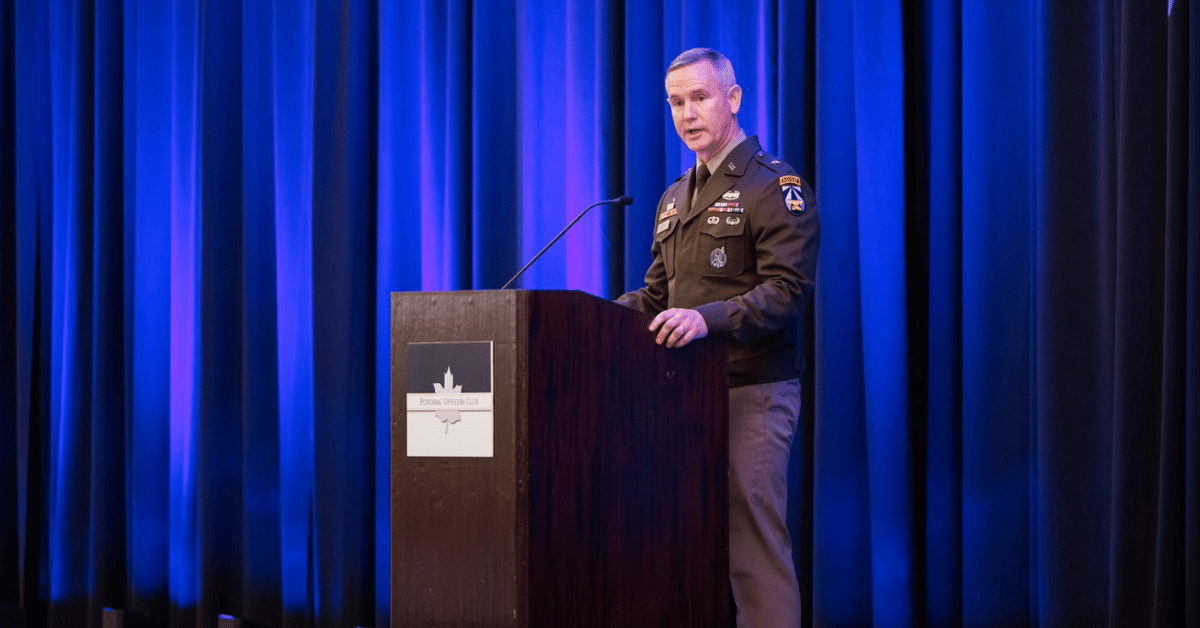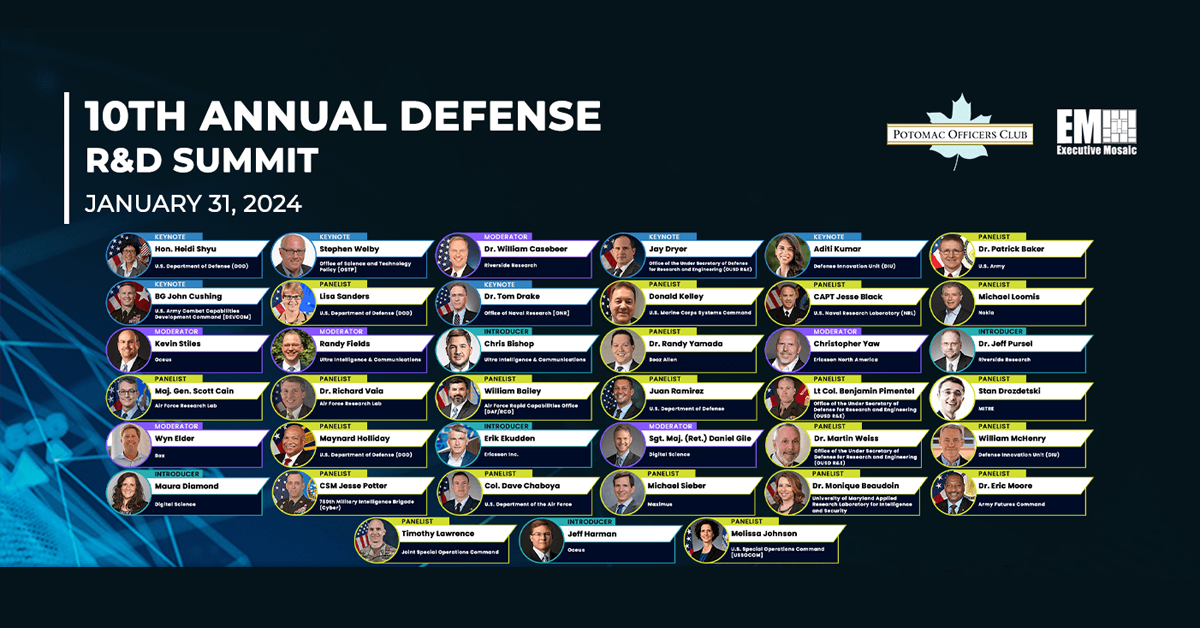The Army Futures Command was initiated in 2018 to prepare the U.S. Army for future fights and make sure it’s developing strategies that will be resilient to threats decades from now.
At the Potomac Officers Club’s 10th Annual Defense R&D Summit on Wednesday, BG John Cushing, commanding general of U.S. Army Combat Capabilities Development Command, a branch of AFC, discussed the latter’s priorities in a keynote address.
“We must transform the way the Army approaches doctrine, how we organize ourselves, our training efforts, how we develop our future leaders, our facility and infrastructure investments and our policies,” Cushing stated emphatically.
To do so, he named a three-pronged approach:
- Focus on “our people”
- Designing the Army of 2040
This step has a six-part process within it:
- Continually assess the future operating environment
- Conduct an experimentation
- Develop concepts
- Develop the requirements
- Conduct the research
- Integrate all of the above
- Delivering the Army of 2030
Cushing said AFC anticipates fairly bleak conditions for 2040.
“By 2040, the army expects a more transparent battlefield; to have its logistics contested starting from the homeland; more actors with high-end capabilities; increasingly lethal weapons at extended ranges; and dense populations driven by an increased urbanization of the world’s population,” he described. “Future warfare will be more dangerous and unpredictable.”
He went on to say he believes surveillance, or “constant observation,” will deepen due to the “proliferation of traditional and non-traditional sensors.” China is seen as a persistent threat for the next 15-plus years and is projected to compete with the U.S. for raw materials, computing power and “reclamations of territory across its regions.”
A major preparatory action the Army and military at large must take, then, is to enhance data-centricity. Cushing said data is not valuable unless warfighters are able to quickly access and understand it. Thus, AFC is doubling down on efforts to make data intuitive, low-signature and iterative, which will effectively bolster command and control systems.
One way the Department of Defense is sorting and organizing data is through artificial intelligence. Register to attend the Potomac Officers Club’s 5th Annual AI Summit to hear from top AI DOD officials like Chief Digital and Artificial Intelligence Office Chief Technology Officer Dr. William Streilein and Principal Director of Trusted AI and Autonomy Dr. Kimberly Sablon. The all-day event will be held on March 21 at Falls Church Marriott Fairview Park in Virginia. Don’t miss out!








